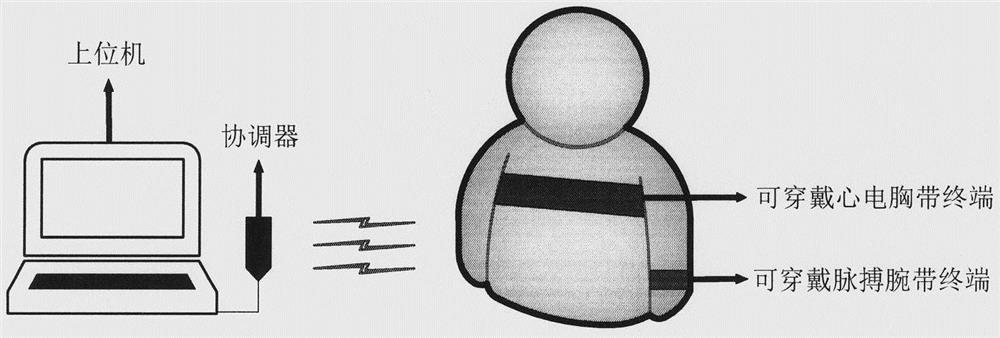Wireless blood pressure continuous monitoring system based on PWTT
A monitoring system and blood pressure technology, which is applied in vascular assessment, telemetry patient monitoring, diagnostic recording/measurement, etc., can solve the problems of fixed function, weak expandability, inconvenient putting on and taking off, etc., and achieves limited measurement position and low cost Low, easy on and off effect
- Summary
- Abstract
- Description
- Claims
- Application Information
AI Technical Summary
Problems solved by technology
Method used
Image
Examples
Embodiment Construction
[0025] In order to make the technical solution proposed by the present invention clearer, the present invention will be described and introduced in detail below in conjunction with the accompanying drawings and specific embodiments, but the following embodiments are only illustrative, not restrictive.
[0026] A wireless blood pressure monitoring system based on PWTT, see appendix figure 1 , including a coordinator, a wearable ECG chest strap terminal, a wearable pulse wristband terminal and a host computer; the coordinator is responsible for setting up a sensor network and controlling the synchronous collection and transmission of terminal data; the wearable ECG chest strap terminal, Responsible for the collection of ECG signals and wireless transmission to the coordinator, including the ECG main circuit module, ECG housing, and chest strap; the wearable pulse wristband terminal is responsible for the collection of PPG signals and wireless transmission to the coordinator, incl...
PUM
 Login to View More
Login to View More Abstract
Description
Claims
Application Information
 Login to View More
Login to View More - R&D
- Intellectual Property
- Life Sciences
- Materials
- Tech Scout
- Unparalleled Data Quality
- Higher Quality Content
- 60% Fewer Hallucinations
Browse by: Latest US Patents, China's latest patents, Technical Efficacy Thesaurus, Application Domain, Technology Topic, Popular Technical Reports.
© 2025 PatSnap. All rights reserved.Legal|Privacy policy|Modern Slavery Act Transparency Statement|Sitemap|About US| Contact US: help@patsnap.com



